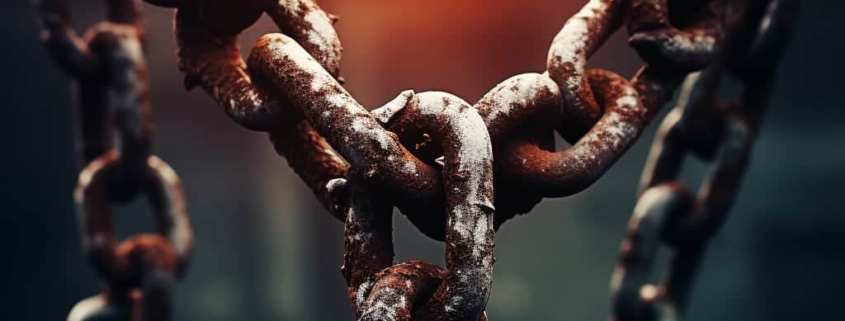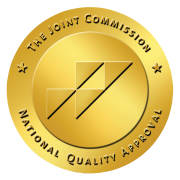What Is a Trauma Bond?
Breaking a trauma bond is challenging but entirely possible—think of it as untangling a complex knot. It requires self-awareness, support, and often professional guidance. Healing involves understanding the nature of the bond, practicing self-care, setting boundaries, and sometimes, stepping away from the relationship.
Therapy can be a crucial tool in this process, providing a safe space to understand and heal from the trauma. Remember, it’s a journey of self-discovery and healing, not a race to the finish line. To fully understand the potential of breaking a trauma bond, let’s find out more about what is a trauma bond.
What Is a Trauma Bond?
Imagine you’re walking with a friend who subtly nudges you into a puddle every few steps. Oddly enough, you start to anticipate these nudges, even feeling a strange connection to them. This is a bit like a trauma bond—an emotional connection formed between a person and their abuser, born out of a cycle of abuse, devaluation, and the intermittent warmth or reward.
In simpler terms, a trauma bond is the psychological equivalent of Stockholm Syndrome in relationships. It’s like being addicted to a toxic love, where the highs feel like soaring in the sky, and the lows like plunging into an abyss.
Trauma Bond and Intermittent Reinforcement
Consider the concept of intermittent reinforcement. This principle explains how unpredictable rewards can lead to more persistent behavior than consistent rewards. Where a trauma bond is concerned, the abuser unpredictably alternates between kindness and cruelty.
This inconsistency triggers a powerful psychological response. The victim stays in the relationship, holding onto hope for the positive reinforcement, much like a gambler at a slot machine waiting for the next win.
Neurologically, this cycle of abuse and intermittent kindness can create pathways in the brain similar to those formed in addiction. Your brain becomes wired to seek out the abuser’s approval, despite the harm they cause. The unpredictability of kindness releases dopamine, a neurotransmitter associated with reward and pleasure, further reinforcing the bond.
Trauma Bond vs. Authentic Bonding
What is a trauma bond and what is authentic bonding? In contrast to the chaotic nature of a trauma bond, authentic bonding is founded on principles of secure attachment. Secure attachment refers to a stable emotional connection between people where each person feels safe and valued. Authentic bonding involves consistent positive interactions, emotional safety, and mutual respect, fostering a deep and healthy emotional connection.
In authentic bonds, power dynamics are equal, and communication is open and honest. There’s a sense of mutual empowerment, where both individuals feel free to express themselves without fear of retribution or judgment.
Why Stay in Trauma Bond?
It’s a bit like being stuck in a maze with the illusion that the only safe path is the one you know, no matter how harmful it is. Trauma bonds often form because the abused person may cling to the fleeting moments of kindness or affection from the abuser, mistaking them for genuine love. The cycle of abuse creates a confusing blend of fear, attachment, and a desire for the abuser’s approval.
Can a trauma bond be formed in relationships other than romantic ones?
While often discussed in the context of romantic relationships, trauma bonds can form in various dynamics—between parents and children, friends, or even in professional relationships. It’s the underlying pattern of abuse and intermittent reinforcement that defines the bond, not the type of relationship.
Identifying and Treating a Trauma Bond
So, how do you know if you’re in a trauma bond? It’s like trying to read the label from inside the bottle. Here are some signs:
- The Rollercoaster Effect: If your relationship feels like a never-ending rollercoaster of extreme highs and lows, it’s time to consider the possibility.
- Justification of Bad Behavior: You find yourself justifying or rationalizing abusive or unhealthy behaviors.
- Walking on Eggshells: Constantly feeling on edge, as if you’re tiptoeing around broken glass, afraid of upsetting your partner.
What Is a Trauma Bond: How to Break It
Breaking a trauma bond is not unlike trying to unlearn a language you’ve been speaking for years. It’s challenging but not impossible. Here’s how:
- Awareness: Recognizing the bond is your first step. Like a detective, gather evidence of your feelings and the nature of the relationship.
- Self-Care: Engage in activities that foster self-respect and self-love. It’s like putting on your oxygen mask first before helping others.
- Boundaries: Set firm boundaries. Think of them as personal rules of engagement in any relationship.
- Support System: Build a scaffold of support. Friends, family, or support groups can be your cheerleaders.
- Professional Help: Sometimes, you need a guide. Therapists or counselors can be your GPS through this complex terrain.
Seeking Treatment for Trauma
Trauma, like a shadow, often follows us unnoticed. Seeking treatment is acknowledging the shadow and learning to walk in the light. Therapy, particularly trauma-informed therapy, is a journey through your past, understanding its impact on your present, and reclaiming your future. Techniques like Cognitive Behavioral Therapy (CBT), Eye Movement Desensitization and Reprocessing (EMDR), or even group therapy can be effective.
In the end, breaking a trauma bond is about reclaiming your narrative. It’s about understanding that while your past chapters are written, you hold the pen for the next ones. It’s a journey of turning pain into empowerment, fear into bravery, and trauma into triumph.
Call Lido Wellness Center Today
Are you or someone you love entangled in the invisible chains of a trauma bond? At Lido Wellness Center, we understand the complexity and challenge of these bonds. Our team of compassionate professionals is here to guide you through the journey of healing and self-discovery. Don’t let trauma define your story. Reach out to us, and together, we can break these bonds, one step at a time. Your path to empowerment and wellness starts here – let’s embark on this journey together.




